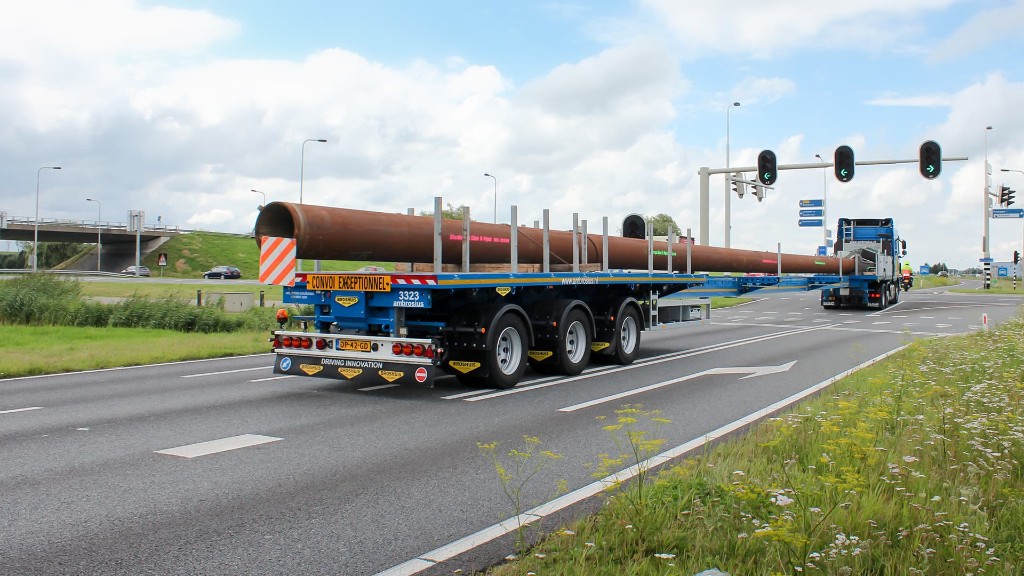Ask us
your question!
What are you transporting?
Building materials
The term ‘building materials’ includes a wide range of products. From bricks to piles, and from concrete panels to window frames. What trailer is the best to use for what type of building material? The weight is often the decisive factor that determines this. This dimension will determine how many axles the trailer will need to have. The size is also a crucial factor. The longer the materials to be transported are, the longer trailer needs to be and the taller the materials, the lower the cargo bed needs to be. The diagram below shows which type of trailer is the best to use. The number of axles or the degree of extendibility is not stated because this depends on the cargo.
| Building materials to the building site | Solution | Trailer option | |
|---|---|---|---|
| Piles | Flatbed semi trailer | Supporting frames | - |
| Floor sections | Flatbed trailer - Semi low loader | Loading crane - Loading table | Movable folding crane (Inward/outward runner), fixed crane |
| Prefab walls | Semi low loader | A-loading tables | - |
| Trusses | Flatbed trailer - Semi low loader | Loading table | - |
| Stones | Flatbed semi trailer | Loading crane | Movable folding crane (Inward/outward runner) |
| Window frames | Semi low loader - low loader | Loading crane - loading tables | Fixed crane (on the gooseneck) |
Piles
Due to the shape and the fixed bearing points, the flat extendable trailer is the most suitable. This trailer is often single or double-extendible. This can make the combination length a challenge. If the rear steering is then not enough to reach the location, supporting frames are often used on the trailer to simply load the piles over the cabin. This reduces the transport length, which makes hard-to-reach places accessible at a stroke.
Floor sections
The length and shape of the floor section will determine the best type of trailer to use. Is a semi low loader the best fit, or can a flatbed trailer be used? Because of the low weight of most floor sections, a number of floor sections are transported on one trailer at a time. (The trailer cannot then be extended) These floor sections are easy to load and unload with a folding crane. This makes you ‘self supporting’, which offers a huge number of advantages. Read about the different cranes here.
Prefab walls
Prefab walls are often transported on semi low loaders or low loaders. The shape and size of these materials means that a flatbed trailer cannot actually be used.
Trusses
When transporting trusses, the length is always the decisive factor. The flatbed trailer is the most suitable for this. It is also possible to use a semi low loader and the loading tables included are then necessary to still be able to create a flat cargo bed.
The advantage of a semi low loader with loading tables is that the trailer can be used for a variety of materials.
Stones
Transporting stones is regarded as transporting a load that can be divided (divisible load). When transporting a divisible load, you may not extend the trailer. This is laid down by law. If the height does not play a role, a flatbed trailer is the best solution. Due to the relative low weight of a single pallet of stones, it is very easy for you to load and unload this cargo yourself using a folding crane. This makes you 'self supporting'. Read about the different cranes here.
Window frames
When transporting window frames, the dimensions and the shape of the frame determines the type of trailer. Window frames are often characterised by low weight and large dimensions. For example, you can choose a 1-axle low loader for this. Because of the low weight, you can easily load and unload and even place these frames with a folding crane.

